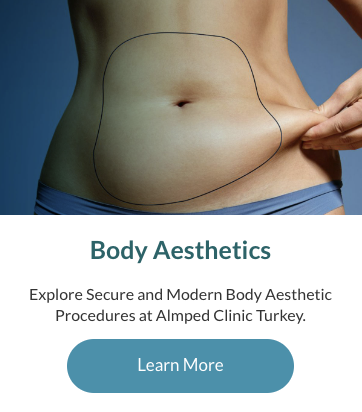Overview
Hyperhidrosis In Istanbul
Achieve relief and renewed confidence with hyperhidrosis surgery. Our experts provide personalised care and accurate information tailored to your needs throughout the entire process, ensuring a thorough understanding from consultation through to post-procedure follow-up..
Hyperhidrosis is a condition characterised by excessive sweating beyond what is necessary for thermoregulation. It can affect various parts of the body, most commonly the underarms, palms, and soles of the feet. Individuals seek treatment for hyperhidrosis due to social discomfort, difficulty in everyday activities, and dissatisfaction with their condition. The primary surgical treatment for hyperhidrosis involves sympathectomy, a procedure that interrupts nerve signals to sweat glands, thereby reducing excessive sweating. By targeting the nerves responsible for sweating, sympathectomy not only improves social confidence and quality of life but also reduces the risk of complications associated with persistent sweating, such as skin infections and discomfort.
HYPERHIDROSIS OPERATION GUIDE
What Is Hyperhidrosis?
Hyperhidrosis surgery, also known as sympathectomy or sweat gland removal, is a surgical procedure aimed at alleviating excessive sweating in specific areas of the body, such as the underarms, palms, or feet. This procedure can be performed under general anaesthesia or local anaesthesia with sedation, depending on the patient’s preference and the extent of the condition. Typically lasting 1 to 2 hours, hyperhidrosis surgery offers patients a significant improvement in their quality of life by addressing the physical discomfort and social challenges associated with persistent, uncontrollable sweating.


Who May Be A Good Candidate For Hyperhidrosis?
Good candidates for hyperhidrosis treatment, particularly surgical options like sympathectomy, typically include individuals who experience severe sweating that significantly impacts their daily activities, social interactions, and quality of life despite trying non-surgical treatments such as antiperspirants or medications. Candidates may have hyperhidrosis affecting areas like the underarms, palms, or feet, where sweating is excessive and difficult to manage through conservative measures alone. They should be in good overall health and have realistic expectations regarding the outcomes of the procedure. Before proceeding with surgery, candidates undergo thorough evaluation and consultation with our qualified healthcare team to determine the most suitable treatment approach based on their specific condition and medical history.
How Much Does Hyperhidrosis Cost?
The cost of hyperhidrosis treatment can vary depending on several factors, including the type of procedure recommended, the severity and extent of sweating, and whether additional treatments are required. During consultations with our medical team, you will receive detailed information about the treatment options available to address your specific hyperhidrosis concerns, along with a personalised breakdown of costs. We offer various financing options to make hyperhidrosis treatment more accessible, and our team is committed to providing clear, supportive guidance on financial considerations throughout your treatment journey. Our goal is to ensure transparency and assist you in making informed decisions about improving your quality of life through effective hyperhidrosis management.


Hyperhidrosis: What To Expect?
Hyperhidrosis treatment procedures are typically performed under either general anaesthesia or local anaesthesia with sedation, ensuring patient comfort throughout the process. The duration of the procedure varies based on the specific treatment approach and the areas targeted for sweat reduction, typically lasting between 1 to 2 hours. Patients undergoing hyperhidrosis treatment generally do not experience pain during the procedure due to the anaesthesia provided. Post-procedure, mild swelling and discomfort may be expected in the treated areas as part of the healing process. Our experienced medical team provides comprehensive postoperative care instructions and support to manage any discomfort effectively, guiding you towards a smooth and successful recovery.
HYPERHIDROSIS FAQ
FAQ
Most frequently asked questions about Hyperhidrosis
Hyperhidrosis surgery, typically sympathectomy, involves interrupting nerve signals to sweat glands to reduce excessive sweating. It's often done through minimally invasive techniques like endoscopy, where tiny incisions are made to access and treat the affected nerves, resulting in reduced sweating in targeted areas like the underarms or palms.
After Hyperhidrosis surgery, patients may experience mild discomfort, swelling, and bruising at the incision sites. Recovery typically involves minimal downtime, with most individuals able to resume normal activities within a few days to a week. Postoperative care may include wearing compression garments and avoiding strenuous activities initially. Pain medication and follow-up appointments with the surgeon ensure optimal healing and long-term relief from excessive sweating.
Results from hyperhidrosis surgery can be long-lasting, providing relief from excessive sweating for several years in many cases.
Before surgery, discuss your medical history, expectations, potential risks, and alternative treatments with your doctor to ensure a comprehensive understanding and informed decision-making process.
GET FREE CONSULTATION





